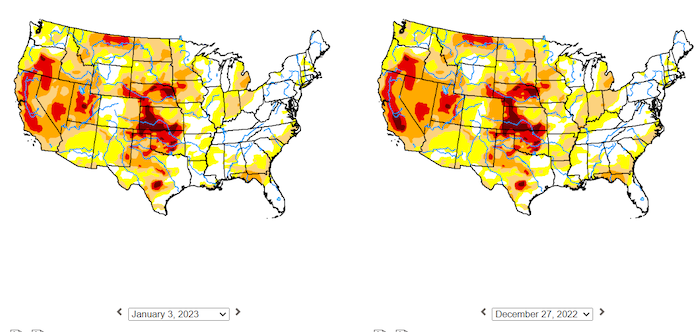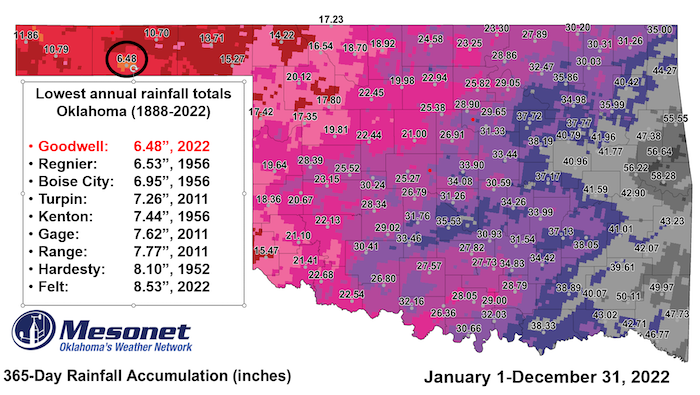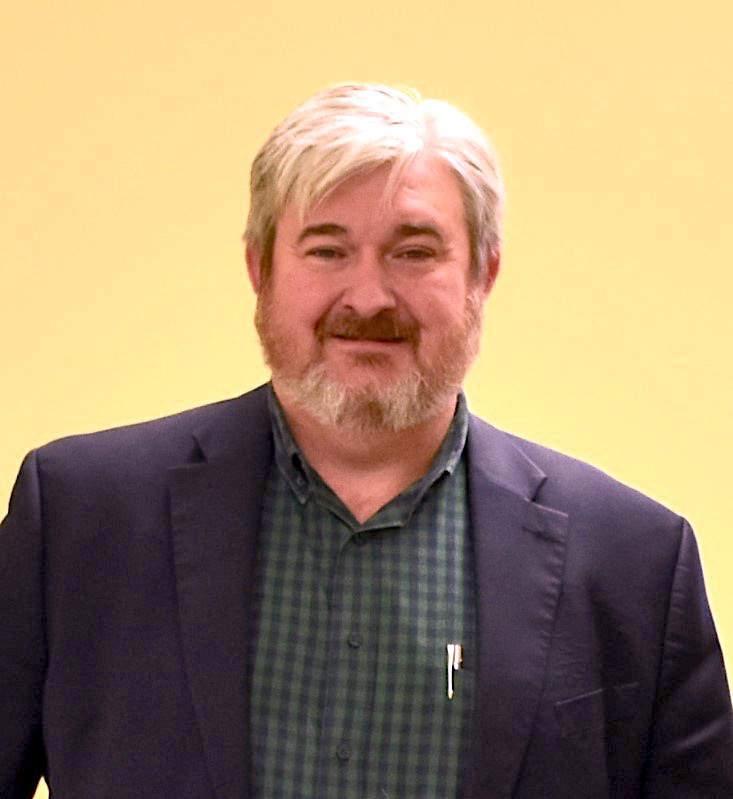The term "broken record" can mean many things. In the case of today’s blog, it definitely has two meanings.
First, I feel like a broken record, skipping over and over and over again, on dry weather and drought. In the past, when I’ve written about extensive dry conditions in the region, we inevitably get rain.
Not this time.
Here is the latest drought monitor map (on the left) compared with last week’s (on the right):

Talk about something being stuck on repeat. Not a lot of change in the region, is there?
That brings me to the second meaning of the term “broken record”—actually breaking a record. It just so happens that our friends at the Oklahoma MESONET put together a graphic showing the annual rainfall at all of their monitoring stations in 2022. Check it out:

As you can see, the MESONET station in Goodwell in the Panhandle recorded a total accumulation of precipitation in 2022 of just 6.48 inches. That’s all the rain that fell there for the whole year.
That’s it.
This breaks a record that goes all the way back to 1956. In fact, this is the least amount of recorded rainfall at a single location going back to 1888.
How’s that for a broken record?
Unfortunately, there doesn’t seem to be any relief in sight. In the meantime, you can check out our latest Voices from the Frought video with northwest Kansas ag producer Michael Thompson. I also will be visiting later in the month with Victor Muphy of the national weather service on our podcast to discuss current conditions and what the future may have in store for us weather-wise. You can check out my past visits with Victor (and other podcasts) here.
Let’s hope the weather changes soon, and I can start writing about all the rain!






